#temnodontosaurus
Text
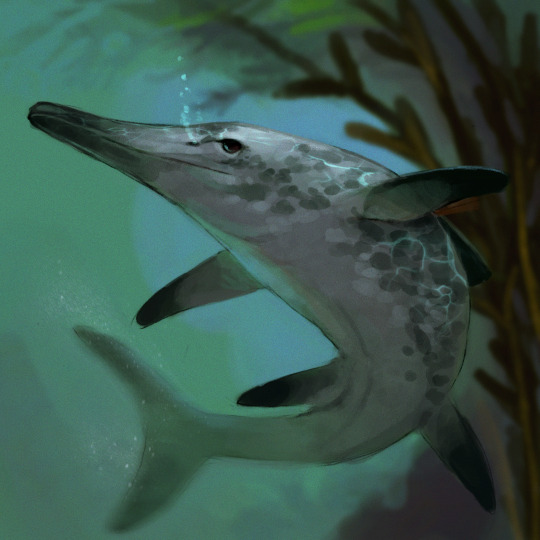
Y'know, I did do some paleoart semi-recently but it was more about vibes than trying to be accurate. Temnodontosaurus and kelp
489 notes
·
View notes
Text
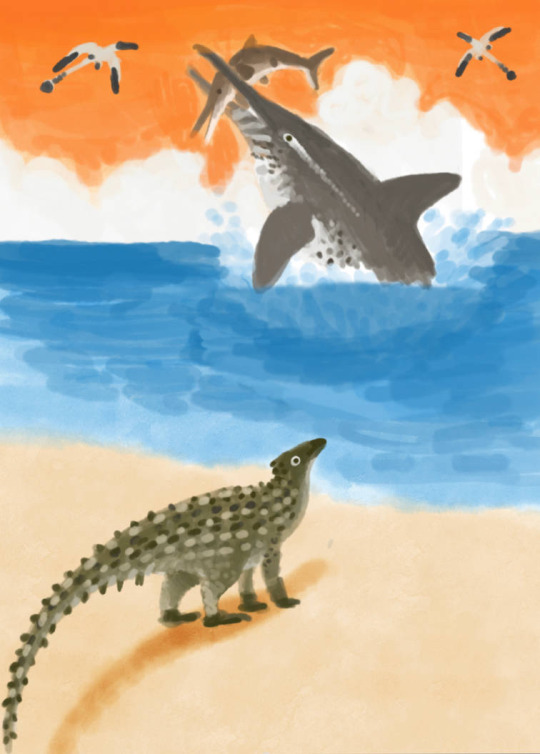
My third entry for Jurassic July 2023: A Scelidosaurus stands at a beach and watches a Temnodontosaurus breach from the sea with a smaller icthyosaur caught in its jaws.
333 notes
·
View notes
Photo

I woke up last night thinking about Batrachotomus and that gave me the idea for this (and there's even more funky guys here, you should all be familiar with Europasaurus and Co.)
#paleo#paleontology#coproliteposting#shitpost#anurognathus#plateosaurus#perry the platypus#batrachotomus#propaleotherium#temnodontosaurus#prehistoric#germany
550 notes
·
View notes
Text

temnodontosaurus made in blender
7 notes
·
View notes
Text
WE'RE ROLLING WITH THE
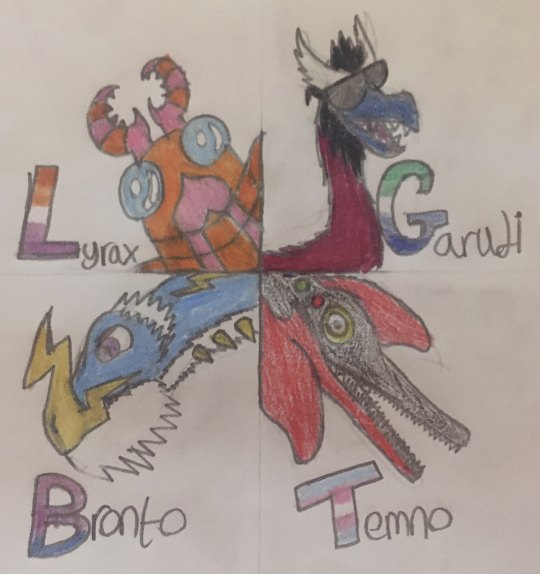
Happy Pride Month y'all!
#fossil fighters#fossil fighters champions#vivosaur#fossil fighters fanart#vivosaurs#pride#pride month#garudimimus#temnodontosaurus#brontosaurus#lyrarapax#dinosaur#dinosaurs#ichthyosaur#cambrian
27 notes
·
View notes
Text

13 notes
·
View notes
Text

Photo of Crystal Palace Plesiosaurus and Temnodontosaurus sculptures being built in 1854
https://www.londonpicturearchive.org.uk/view-item?i=322632&WINID=1707840500453
4 notes
·
View notes
Photo
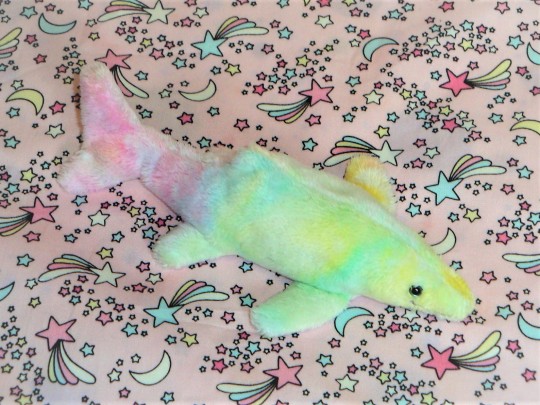
Tiny tie-dye temnodontosaurus, sewn by me using a pattern designed by Palaeoplushies in March 2019
#temnodontosaurus#ichthyosaur#prehistoric#sea creature#Thylacereal#sewn by me#artist plush#plushie#toys#rainbow#pastel colour
83 notes
·
View notes
Text

Mary Anning but in FGO style with gigantic ichthyosaur Temnodontosaurus, one of her greatest discoveries in real history.
10 notes
·
View notes
Text

Please welcome Franconiasaurus brevispinus!
A new plesiosaur from the early Jurassic of Germany and a important missing link in plesiosaur evolution! Congratulations to the three authors, here the paper for those who haven't seen it
I have a rather personal connection to this specimen because me and Sven were on a road trip to the EAVP meeting in Munich when we came across this fossil in Bayreuth. It was quite the surprise walking into the collection and finding this, already largely out of the matrix.

It was quite funny to see Sven dive right in and after roughly 15 min of looking at it proclaiming, "pretty sure that's a new genus", I think we had a name for it already on the drive back
Franconiasaurus wasn't an apex predator, that time hadn't come yet for plesiosaurs, but it fills an important evolutionary gap between basal and more derived plesiosaur clades of the Jurassic. Here a little overview of animals that lived with it. This formation, the Jurensismergel, isn't as productive as the underlying Posidonia shale, but it's also a thinner, and less studied formation. Quite a few fossils still await a proper description or a name. These Temnodontosaurus for example.
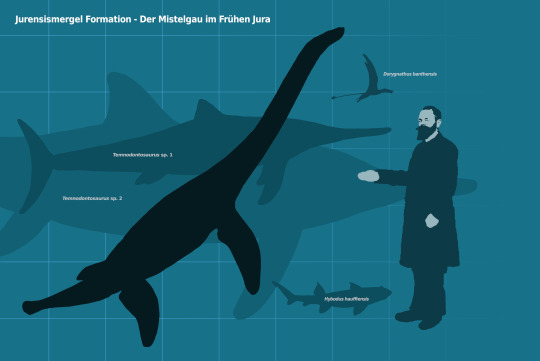
A little background for my illustration. The Jurensismergel appears to preserve largely a deep water environment but I wanted to show the animal not in a blue void or with some dark sludge near the bottom so I gave it a patch reef to rest on, sourced from some locally available Muschelkalk. The whole presentation is very much inspired by the collection of the Museum in Bayreuth. down to the Temnodontosaurus rostrum jutting out of the ground here. Saurichthys is known from the Jurensismergel but the Dapedium and other fish were burrowed from Posidonia.

when you zoom in you can see crustaceans climbing over and cleaning the Franconiasaurs.

#sciart#paleoart#palaeoblr#jurassic#plesiosaur#franconiasaurus#marine reptile#toarcian#ichthyosaur#posidonia shale#jurensismergel#fish
677 notes
·
View notes
Text
Crystal Palace Field Trip Part 2: Walking With Victorian Dinosaurs
[Previously: the Permian and the Triassic]
The next part of the Crystal Palace Dinosaur trail depicts the Jurassic and Cretaceous periods. Most of the featured animals here are actually marine reptiles, but a few dinosaur species do make an appearance towards the end of this section.

Although there are supposed to be three Jurassic ichthyosaur statues here, only the big Temnodontosaurus platyodon could really be seen at the time of my visit. The two smaller Ichthyosaurus communis and Leptonectes tenuirostris were almost entirely hidden by the dense plant growth on the island.

Ichthyosaurs when fully visible vs currently obscured
Left side image by Nick Richards (CC BY SA 2.0)
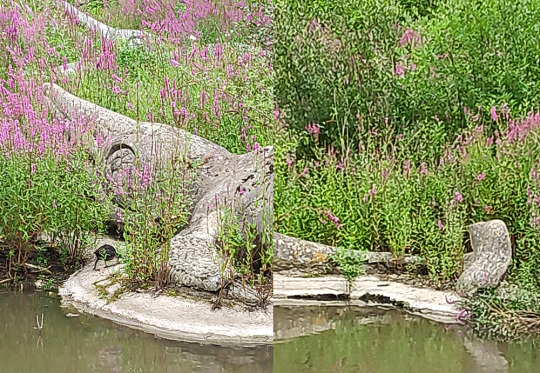
Head, flipper, and tail details of the Temnodontosaurus. A second ichthyosaur is just barely visible in the background.
Ichthyosaurs were already known from some very complete and well-preserved fossils in the 1850s, so a lot of the anatomy here still holds up fairly well even 170 years later. They even have an attempt at a tail fin despite no impressions of such a structure having been discovered yet! Some details are still noticeably wrong compared to modern knowledge, though, such as the unusual amount of shrinkwrapping on the sclerotic rings of the eyes and the bones of the flippers.

———

Arranged around the ichthyosaur, three different Jurassic plesiosaurs are also represented – “Plesiosaurus” macrocephalus with the especially sinuous neck on the left, Plesiosaurus dolichodeirus in the middle, and Thalassiodracon hawkinsi on the right.
They're all depicted here as amphibious and rather seal-like, hauling out onto the shore in the same manner as the ichthyosaurs. While good efforts for the time, we now know these animals were actually fully aquatic, that they had a lot more soft tissue bulking out their bodies, and that their necks were much less flexible.

———
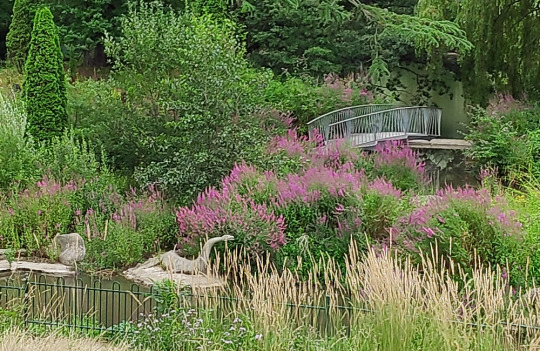
The recently-installed new pivot bridge is also visible here behind some of the marine reptiles.
———

Positioned to the left of the other marine reptiles, this partly-obscured pair of croc-like animals are teleosaurs (Teleosaurus cadomensis), a group of Jurassic semi-aquatic marine crocodylomorphs.

A better view of the two teleosaurs by MrsEllacott (CC BY-SA 4.0)
The Crystal Palace statues have the general proportions right, with long thin gharial-like snouts and fairly small limbs. But some things like the shape of the back of the head and the pattern of armored scutes are wrong, which is odd considering that those details were already well-known in the 1850s.

———
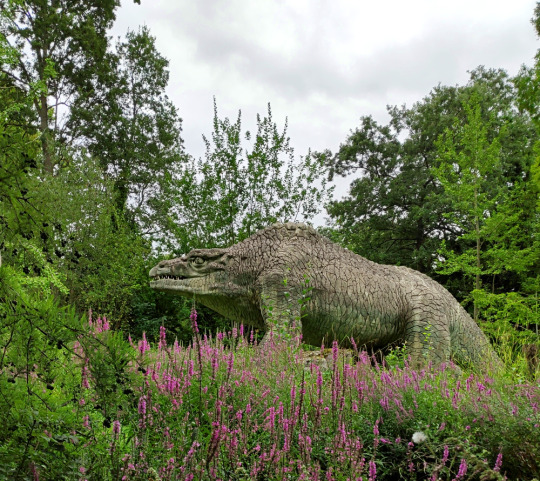
Finally we reach the first actual dinosaur, and one of the most iconic statues in the park: the Jurassic Megalosaurus!
Megalosaurus bucklandi was the very first non-avian dinosaur known to science, discovered in the 1820s almost twenty years before the term "dinosaur" was even coined.
At a time when only fragments of the full skeleton were known, and before any evidence of bipedalism had been found, the Crystal Palace rendition of Megalosaurus is a bulky quadrupedal reptile with a humped back and upright bear-like limbs. It's a surprisingly progressive interpretation for the period, giving the impression of an active mammal-like predator.
This statue suffered extensive damage to its snout in 2020, which was repaired a year later with a fiberglass "prosthesis".

———
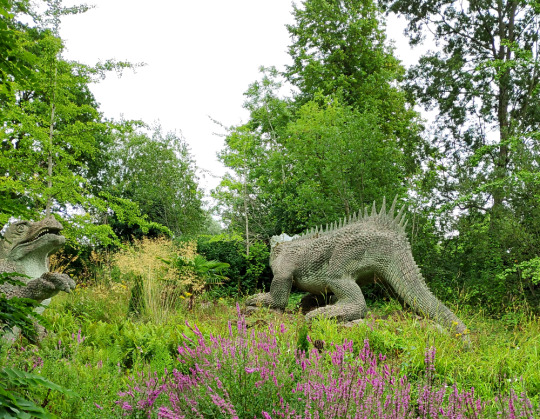
Reaching the Cretaceous period now, we find Hylaeosaurus (and one of the upcoming Iguanodon peeking in from the side).
Hylaeosaurus armatus was the first known ankylosaur, although much like the other dinosaurs here its life appearance was very poorly understood in the early days of paleontology. Considering how weird ankylosaurs would later turn out to be, the Crystal Palace depiction is a pretty good guess, showing a large heavy iguana-like quadruped with hoof-like claws and armored spiky scaly skin.
It's positioned facing away from viewers, so its face isn't very visible – but due to the head needing to be replaced with a fiberglass replica some years ago, the original can now be seen (and touched!) up close near the start of the trail.


———

Two pterosaurs (or "pterodactyles" according to the park signs) were also supposed to be just beyond the Hylaeosaurus, but plant growth had completely blocked any view of them.
Although these two statues are supposed to represent a Cretaceous species now known as Cimoliopterus cuvieri, they were probably actually modeled based on the much better known Jurassic-aged Pterodactylus antiquus.
A second set of pterosaur sculptures once stood near the teleosaurs, also based on Pterodactylus but supposed to represent a Jurassic species now known as Dolicorhamphus bucklandii. These statues went missing in the 1930s, and were eventually replaced with new fiberglass replicas in the early 2000s… only to be destroyed by vandalism just a few years later.
(The surviving pair near the Hylaeosaurus are apparently in a bit of disrepair these days, too, with the right one currently missing most of its jaws.)

Image by Ben Sutherland (CC BY 2.0)
The Crystal Palace pterosaurs weren't especially accurate even for the time, with heads much too small, swan-like necks, and bird-like wings that don't attach the membranes to the hindlimbs. Hair-like fuzz had been observed in pterosaur fossils in the 1830s, but these depictions are covered in large overlapping diamond-shaped scales due to Richard Owen's opinion that they should be scaly because they were reptiles.
But some details still hold up – the individual with folded wings is in a quadrupedal pose quite similar to modern interpretations, and the bird-like features give an overall impression of something more active and alert than the later barely-able-to-fly sluggish reptilian pterosaur depictions that would become common by the mid-20th century.

(Much like the statues themselves, the "modern" reconstruction above is based on Pterodactylus rather than Cimoliopterus)
———

The last actual dinosaurs on this dinosaur trail are the two Cretaceous Iguanodon sculptures. At the time of my visit they weren't easy to make out behind the overgrown trees, and only the back end of the standing individual was clearly visible.

Named only a year after Megalosaurus, Iguanodon was the second dinosaur ever discovered, and early reconstructions depicted it as a giant iguana-like lizard.
The Crystal Palace statues depict large bulky animals, one in an upright mammal-like stance and another reclining with one hand raised up. (This hand is usually resting on a cycad trunk, but that element appeared to be either missing or fallen over when I was there.)
Famously a New Year's dinner party was held in the body of the standing Iguanodon during its construction, although the accounts of how many people could actually fit inside it at once are probably slightly exaggerated.
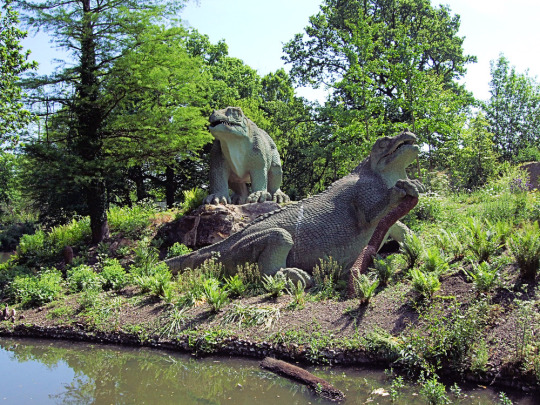
A clearer view by Jim Linwood (CC BY 2.0)
Considering that the skull of Iguanodon wasn't actually known at the time of these sculpture's creation, the head shape with a beak at the front of the jaws is actually an excellent guess. The only major issue was the nose horn, which was an understandable mistake when something as strange as a giant thumb spike had never been seen in any known animal before.

(The fossils the Crystal Palace statues are based on are actually now classified as Mantellisaurus atherfieldensis, but the "modern" reconstruction above depicts the chunkier Iguanodon bernissartensis.)
———
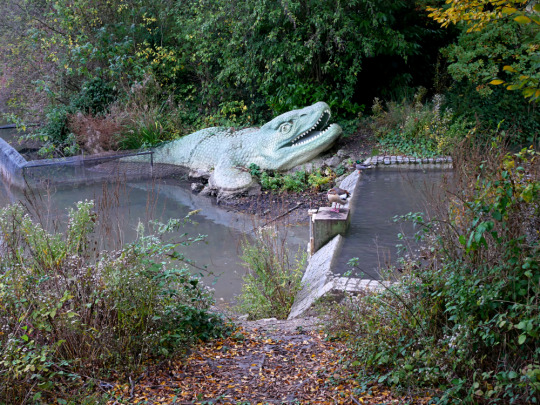
Image by Doyle of London (CC BY-SA 4.0)
I also wasn't able to spot the Cretaceous mosasaur on the other side of the island due to heavy foliage obscuring the view.
Depicting Mosasaurus hoffmannii, this model consists of only the front half of the animal lurking at the water's edge. It's unclear whether this partial reconstruction is due to uncertainty about the full appearance, or just a result of money and time running out during its creation.
The head is boxier than modern depictions, and the scales are too large, but the monitor-lizard like features and paddle-shaped flippers are still pretty close to our current understanding of these marine reptiles. It even apparently has the correct palatal teeth!

Next time: the final Cenozoic section!
#field trip!#crystal palace dinosaurs#retrosaurs#i love them your honor#crystal palace park#crystal palace#ichthyosaur#plesiosaur#teleosaurus#crocodylomorpha#marine reptile#megalosaurus#theropod#hylaeosaurus#ankylosaur#iguanodon#ornithopoda#ornithischia#dinosaur#pterodactyle#pterodactylus#pterosaur#mosasaurus#mosasaur#paleontology#vintage paleoart#art
445 notes
·
View notes
Text
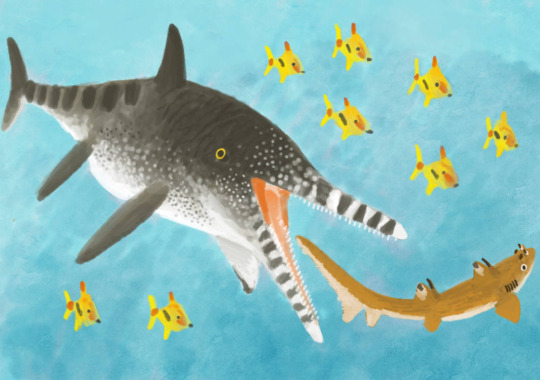
My 11th entry for Jurassic July 2023: A Temnodontosaurus platyodon chases a Hybodus shark 180 million years ago in the Early Jurassic seas of what is now Western Europe. The 10-11 meter-long Temnodontosaurus was the top predator of the Early Jurassic seas that covered much of Western Europe 200-175 million years ago.
#paleoart#paleontography#paleontology#temnodontosaurus#icthyosaurs#icthyosaur#icthyosauria#mesozoic#jurassic period#jurassicperiod#jurassic seas#jurassic july#hybodus
17 notes
·
View notes
Text
Yeah I know this poll is a little apex predator heavy, but to be frank, most sea creatures (living and extinct) would amount to nothing more than fish/whale/ichthyosaur/shark, etc. fodder and that would not make for a fun poll.
#poll#wet beast wednesday#fish#crabs#cephalopods#sharks#marine reptiles#sea turtle#jellyfish#box jellyfish#extinct species#prehistoric life#mosasaurus#ichtyosaurs#whales#cetaceans#dolphin#marine life#marine biology
136 notes
·
View notes
Text
Leninia stellans
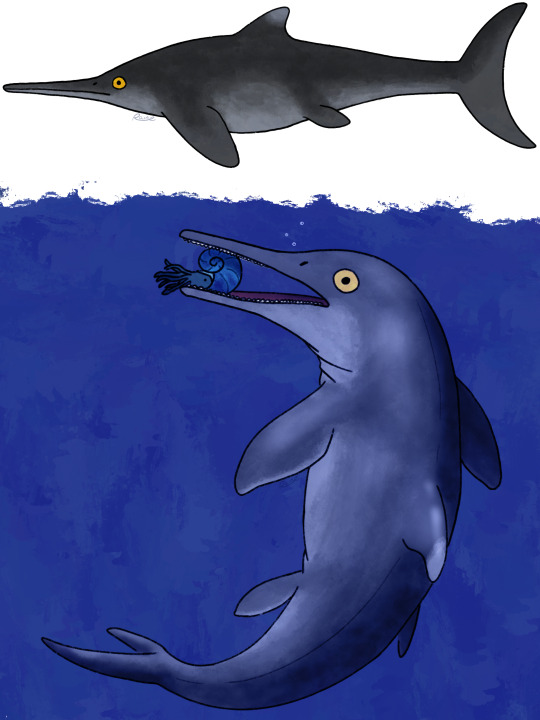
Leninia was a genus of opthalmosaurine ichthyosaur from the Early Cretaceous. Its type species is L. stellans. Its only fossil was found in the bank of the Volga river in Russia. Leninia has the third largest sclerotic ring of any known ichthyosaur, only beat by Baptanodon and Temnodontosaurus.
Leninia is indirectly named after Russian leader Vladmir Lenin, as the museum its fossil is housed in is within the Lenin Memorial and Lenin school complex in Ulyanovsk; as such, the name reflects the fossil's geohistorical location. The species name stellans refers to the fossil's star-shaped frontal-parietal suture.
Its autapomorphies include the presence of an anterior process on the prefrontal over the nasal, a frontal-parietal suture caused by forked processes on both bones, the posterior process of the maxilla extending up to the middle orbit, and the presence of a process on the supratemporal that contacts the parietal.
The only known fossil is a partial skull. It consists of the area from the back of the skull up to the naris, ending in a clean break. Leninia, while being one of the latest-living opthalmosaurines, was recovered as one of the most basal. The presence of a large sclerotic ring and apterure indicates that both are ancestral characteristics of opthalmosaurines, not derived. This also suggests that, unlike Opthalmosaurinae's sister taxon Platypterygiinae, opthalmosaurines did not diversify outside of a "deep diver" niche.
Original paper: Found here
Wikipedia article: https://en.wikipedia.org/wiki/Leninia
#reptile#reptilia#paleoart#paleontology#artwork#original artwork#human artist#leninia#opthalmosaurinae#ichthyosaur#ichthyosauria#obscure fossil animals#obscure fossil reptiles#obscure fossil tetrapods
11 notes
·
View notes
Text
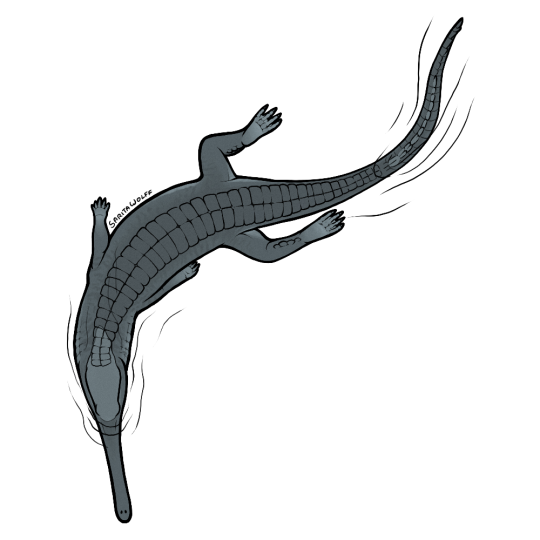
#Archovember Day 11 - Macrospondylus bollensis
The Thalattosuchians were a clade of marine pseudosuchians commonly called “marine crocodiles” or “sea crocodiles”. They were seperated into two groups, the Teleosauroids and the Metriorhynchoids. The metriorhynchoids seemed to be adapted for spending all their time in the water: they had smooth, scale-less skin, tail flukes, and even flippers. Meanwhile, teleosauroids held onto their crocodyliform nature, retaining their osteoderms and probably heading onto land when needed. They inhabited a wide range of habitats: from semi-marine coasts and estuaries, to open-ocean, to freshwater. The Early Jurassic Macrospondylus bollensis was one of these teleosauroids.
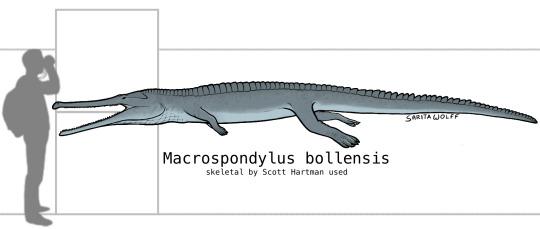
Macrospondylus bollensis, long known as “Steneosaurus bollensis” (Steneosaurus being a wastebasket taxon for thalattosuchians) finally had its genus revived in 2020. At 5.5 m (18 ft), it was the largest known Early Jurassic crocodylomorph. Like many other teleosauroids, it had a long, tapering snout, similar to its modern equivalents the gavialids. This snout would have allowed it to quickly maneuver through the water with little resistance, snapping up fish. Oddly enough, like Megalosaurus, Macrospondylus is also represented in the Crystal Palace gardens (though they are simply labeled as Teleosaurus). Modeled after gharials and based on much better preserved fossils than Megalosaurus, the teleosaur statues actually hold up pretty well, other than using a more crocodilian scute pattern.
Macrospondylus bollensis fossils have been found in Germany, the UK, and Luxembourg. It lived in the newly forming Tethys Sea, which was warm and shallow at the time, dotted with small tropical islands where Macrospondylus would have likely emerged to bask in the sun. This area is known for its fossilized crinoids, cephalopods, bivalves, crustaceans, ichthyosaurs, sharks, bony fish, and more, often exquisitely preserved “frozen in time” due to sudden events and nigh perfect fossilization factors. There was an abundance of fish here for Macrospondylus to feast upon, including chimaeras like Acanthorhina, the armoured Dapedium, the long-bodied Euthynotus, pups of the shark-like Hybodus, the herring-like Leptolepis, and many more. It would have lived alongside a variety of icthyosaurs, small plesiosaurs, other teleosauroids such as Mystriosaurus, Pelagosaurus, and Platysuchus, pterosaurs such as Campylognathoides and Dorygnathus, and come across sauropods such as Ohmdenosaurus wandering the shorelines. But Macrospondylus was not the biggest “fish” in the sea, and if it ventured into the open ocean it could have come across the 8–10 metre (26–33 ft) long icthyosaur Temnodontosaurus, the apex predator of the Early Jurassic Tethys Sea (which is also on display at the Crystal Palace!)
#my art#SaritaDrawsPalaeo#Macrospondylus#Macrospondylus bollensis#Teleosauroid#Teleosaur#Thalattosuchians#Crocodyliforms#pseudosuchians#archosaurs#archosauromorphs#reptiles#Archovember#Archovember2023
10 notes
·
View notes
Text
BONUS: Temno (and another goober)
Now, I couldn't just make a B-Temno without designing the real deal could I?

A neutral attribute Vivosaur based on one of the largest Jurassic predators. This ichthyosaur reached upwards of 12 meters (40 ft) and was dominant in the Early Jurassic seas.
The design here has two motifs, the first of which coming from the coloured dots on the creature's sides, representative of bioluminescent spots often found on deep sea organisms, which are a reference to theories regarding Temno being a deep diving predator. And the second is the red underside being designed to resemble flowing blood, which is a reference to how surprisingly brutal ichthyosaurs were as predators. (And hey, before anyone says it. Onyx already has a Blood motif, so it's not something the FF devs were opposed to.)

As a bonus, here's a little goober. Monyk, an Air attribute Vivosaur based on the adorable Mononykus, a smaller relative of the already represented Bradycneme (Breme). This little scrimblo doesn't really have much of a motif, but it's designed to fit in alongside V-Raptor, as the two are both found in Late Cretaceous Mongolia and are a roughly similar size to one another.
#fossil fighters#fossil fighters champions#fossil fighters fanart#vivosaurs#vivosaur#mononykus#temnodontosaurus#ichthyosaur#dinosaur
13 notes
·
View notes